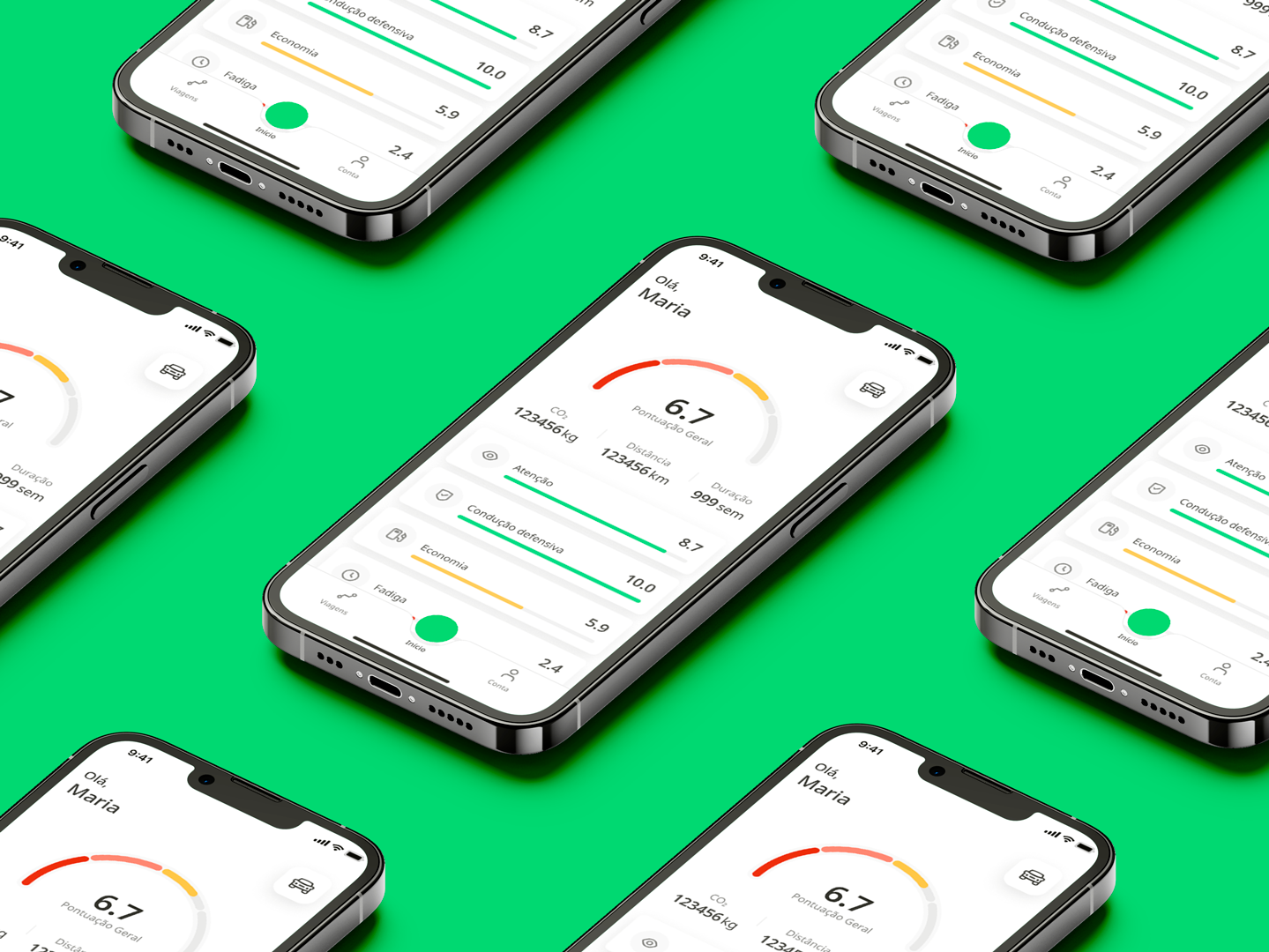Smart Parking: From In-Car Interfaces to Automatized Experiences
The biggest mobility organization in Portugal, responsible for highways, tolls, and other mobility-related services, Aimed to adapt its multiservice app experience to car infotainment systems such as Apple CarPlay and Android Auto. Given the multiple services offered in the App, we prioritized the parking service as the first integration to validate the approach.
Challenge
From the outset, this project took an innovative approach. Early stakeholder alignment highlighted the opportunity to not only integrate the parking service into car infotainment systems but also explore ways to enhance the overall user experience. Our goal was to research and design a better UX for this new environment.
Solution
By further understanding car infotainment user needs, ensuring that users can access a safer and more convenient version of the app for parking, and exploring how that technology could optimize the parking service experience, we identified key features beyond the initially established car screen solution. This resulted in a broader proof of concept that introduced automatization to enhance the entire user journey, providing a smarter and safer experience in-car experience.
Role
I took on the role of Product Designer, working on end-to-end design as part of a team that included an Innovation Project Manager, Product Manager, UX Lead, Tech Lead, iOS Developer, and Android Developer.
Allocated Time: 6 months
The Approach
After a kick-off where we defined the scope, requirements, roles, and responsibilities—validated using the RACI Matrix—as well as the roadmap, I conducted secondary research through desk research and benchmarking while simultaneously planning and starting primary quantitative and qualitative research. We decided to split the execution into two phases: first, to explore technology constraints by collaborating with developers, and then iterating based on research findings.
Desk Research & Benchmarking: Analyzing Competitors, Platforms, and Testing Boundaries
Understanding platform—Apple CarPlay and Android Auto—constraints through desk research and testing.
Understanding competitive scenarios through benchmarking.
Phase 1 - Understanding user flow and wireframing to test the first version.
Phase 1 - Exploring Apple CarPlay templates applying on the task flow.
Phase 1- First version, prototyping to feasibility testing.
Primary research helped us to validate our main assumptions and clarify doubts. We were able to understand the usage scenario, the difficulties users face during the parking process, their thoughts on the features, and how reliable they find the app.
Assumptions:
● Starting to park on a smartphone might not be the safest and fastest method, especially in a driving context, because commuting can be stressful, frustrating, and increase cognitive load. It's necessary to adapt the parking service to be used on a safer device.
● Starting to park can be safer through car infotainment systems, and users think it's more convenient.
● Users will be interested in starting and ending parking automatically.
Insights:
● Users have trouble connecting smartphones to cars at first, but they get accustomed fast. They find differences between platforms are annoying.
● Automatization into parking service is attractive to users. They also want to be advised about parking-related information and feel that they have control of every feature.
● Users don't trust the map's precision or the internet signal, they want to verify it always.
Solution
The research insights provided us with actionable we used to define the solution and, after prioritizing, we could optimize the first version developed while the research ran.
IMAGE HERE
IMAGE 2 HERE
After prototype the improvements, we could go to the next step of research, usability tests. We had the Apple Carplay and Android Auto versions developed and ready to test in field, but we also would have to test the Automations management, which is manage by mobile device, not on car´s screen.
[USABILITY TESTING DATA]
Results
We were able to deliver a valuable functionality, which has parking service adapted to car infotainment experience in the best way so far, we enrich the outcome with automations feature, that empowered Parking experience not only by using car’s screen but also allowing users to park without any interaction with screens.
The Outcome
As recommendations we prepared and delivered a pack with feature improvements such as, Siri voice control detailment, one-click park feature to be apllied by widgets in different mobile screens and, key metrics to be mesured after deployment
[FEATURE IMPROVEMENTS DOCUMENTATION HERE]
Learnings
This project taught me that sometimes we can’t deliver the perfect visual experience we aim for due to platform limitations and constraints. However, we can still create value by meeting the needs of all stakeholders—from business to technology and design—ensuring the solution is viable, appreciated from the start, and continuously improved.
__
Technologies:
FigJam, Figma, Microsoft Teams, Word, Excel, Google Sheets.
Technologies:
FigJam, Figma, Microsoft Teams, Word, Excel, Google Sheets.
__
Note: I can’t disclose more detailed information about the project due to contractual restrictions.


